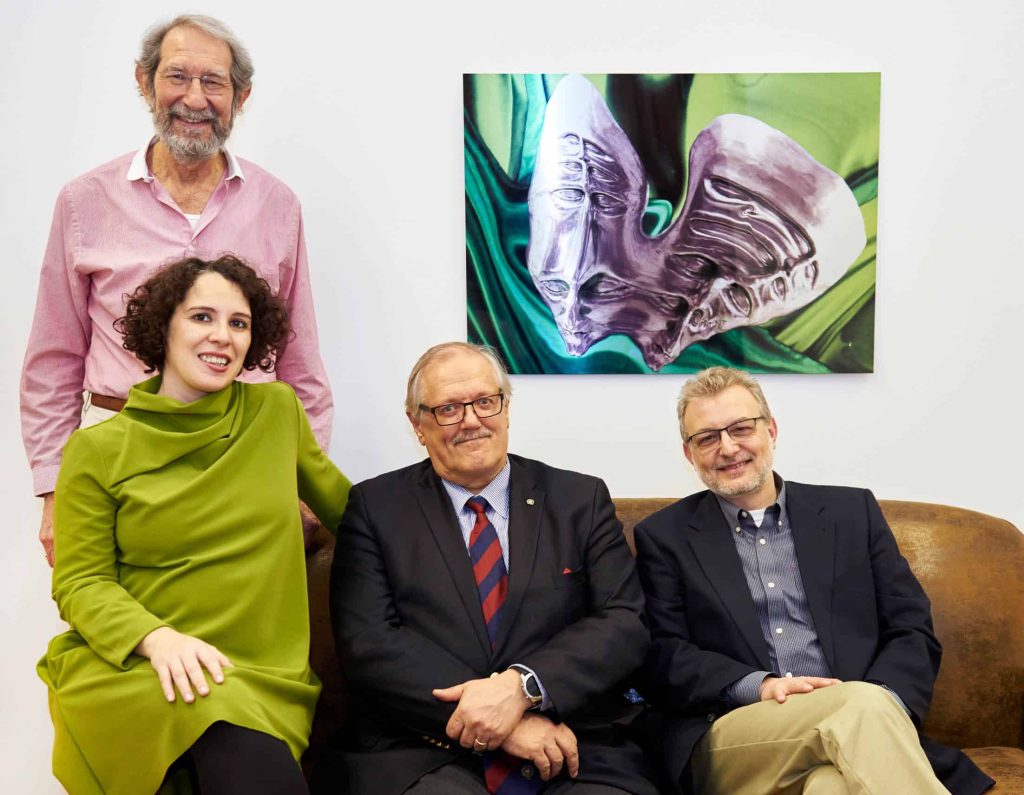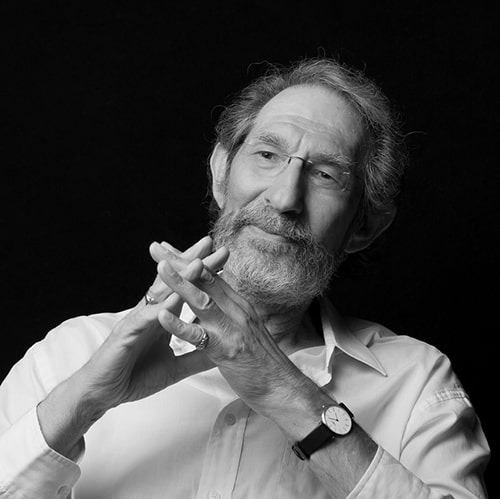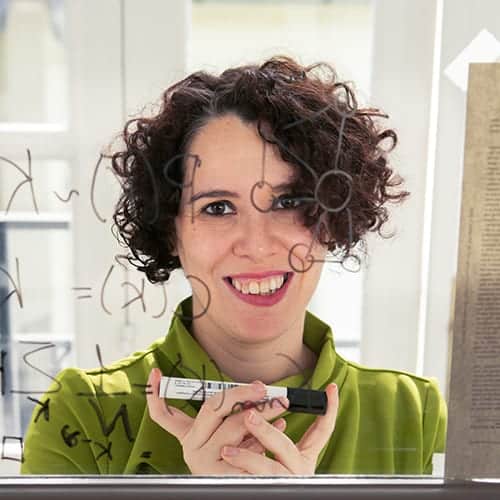SNIPPETS FROM AN EXCITING AFTERNOON AT THE HUB
The last couple of days the Hub was a busy place indeed. Let’s start with our public event on Wednesday, January 31st.
Our External Faculty member Kimmo Kaski from Finland had invited three well known complexity researchers to a colloquium:
- Geoffrey West, former president of the complexity think-tank Santa Fe Institute and celebrated author of the scientific bestseller “Scale” (which will be available in German later this year).
- Roberta Sinatra, assistant professor at the Center for Network Science and the Department of Mathematics at Central European University in Budapest – both affiliates of the Hub.+
- And last but not least Filippo “Fil” Menczer, professor of Informatics and Computer Science at the Indiana University School of Informatics, Computing, and Engineering, who visited the Complexity Science Hub Vienna for the first time.
The three of them were asked, why the answer to the ultimate question of life, the universe and everything should be 42?
HITCHHIKING THROUGH THE QUESTIONS OF LIFE
In his introductory words Kimmo admitted that the title of the colloquium – “Life, Universe, and Everything – 42 is the answer to the ultimate question, ‘What is the question?” –, was not to be taken too seriously. It is a paraphrase of the most famous part of Douglas Adams’ novel “The Hitchhiker’s Guide to the Galaxy”.
But joking or not: The quest for answers to the ultimate questions, to the complexities of life, universe, and, well, everything else is the everlasting endeavor of the human race. So why not confront big thinkers with such a “rather esoteric” question – and see what their answers could be like?

GEOFFREY WEST: “THE FUTURE OF OUR PLANET IS WHAT HAPPENS IN OUR CITIES”
Geoffrey West was the first to start.
“Cities are maybe the greatest invention since our early times as hunters and gatherers”, he said. They allow us to glow with 30,000 watts – each single person a King Kong. Which is astonishing. And frightening too: “All the problems we face today are problems of cities.” Millions of millions of people living in cities absorbing tremendous amounts of energy, water, food, and so many other resources; polluting rivers and seas and the air and the ground; suffering from traffic jams, high housing prices or criminality …
But on the other hand cities are marvelous places, full of art, joy, life, jobs, ideas. “All the smart people end up to live and work in cities”, Geoffrey said. Where else could we better meet an chatter? Most of the time this will be about silly things; but once in a while the encounter of spirited people will bear great ideas. “Cities could thus be part of the solution too.”
But Geoffrey emphasized the word “could”: Humankind would need a completely new mindset, a radical transformation of society to solve the great challenges ahead. “I don’t see that transformation happen”, was his not so optimistic answer to a question from the audience.
Check out Geoffrey West’s talk in full length on our Youtube channel.
ROBERTA SINATRA: “IT IS NEVER TOO LATE TO START”
Our second speaker introduced us to her science of success, more precisely, to success in science and success in art.
Roberta and her colleagues checked the careers of 300,000 scientists from nine disciplines with 40 million publications and 500 million citations and surprisingly found … no patterns for success in science!
“It can be the first paper of a researcher that becomes the most influential one in his or her career, it can be a discovery in the middle or at the end of a lifetime’s work – the hits are random”, Roberta said. “So it’s never too late to start – there is always hope”, she added smilingly, provoking some, probably relieved, laughter in the audience.
Together with Nature, Roberta’s research group produced a little film (“Is a scientific career predictable?”) that shows more details.
Success is a matter of luck as well. “Take the Mona Lisa”, Roberta switched to art. “Today it is maybe the most famous painting in the world. But it wasn’t always considered to be so important.” When Leonardo da Vinci’s mysterious lady was stolen in the year 1911 the Louvre realized only three days later that the dark little canvas was gone. But the huge attention after the theft made people think, “it must be very special – I should go and see it”.
So what drives success in art? Here it rather seems to be the network that matters, found the scientists: The performance of 500,000 artists with 700,000 exhibitions in 140 countries and 23,000 institutions revealed that artists being so lucky to start in highly prestigious institutions (or having persons of influence as friends and supporters) will more likely have an outstanding achievement than their less lucky colleagues.
Roberta Sinatra’s talk in full length on Youtube.
FILIPPO MENCZER: “UP TO 15 PERCENT OF ALL SOCIAL MEDIA ACCOUNTS ARE FAKE”
Our third speaker introduced the audience to the world of social bots and fake news.
There is no simple definition of bots, Fil said, they are all different. But they have in common that they act somehow differently from “normal” human interactions. As an example many accounts are set up to just retweet one and the same (mis)information thousands of times. Accounts behaving like this are most likely fake.
Through these irregularities they can be traced by clever programs. The analysis of millions of tweets and twitter accounts showed that between nine and fifteen percent of all accounts must be fake. “Saying so I want to emphasize that we do not especially want to bash twitter”, he said. “Twitter is one of the few that provides open data that we can use for our research; most of the others like WhatsApp or Facebook act behind closed curtains. But they are not a bit better.”
Finding social bots – and thus unveil the misinformation spreaders – is one of the aims of Fil’s work. “We need tools to aid fact-checkers – in fact our group developed several Apps for that purpose, like Botometer, Hoaxy or Osome.”
To teach news literacy is important as well, although it won’t help with all the problems. “We are confronted with an information overload and limited attention. Not many people take their time to click a link and read the whole story before they like and share a message.” When the headline convenes – or irritates, makes angry, astonishes – the tweet gets retweeted.
“It is the structure of social networks and engagement-based algorithms itself that make us vulnerable to misinformation”, said Fil; social bots are just tools that successfully exploit the weak spots of social media.
Find Filippe Menczer’s whole talk on our Youtube channel


